Purchasing affordable soccer field lights doesn’t have to be complicated, but having a good understanding of the lights before making a purchase is essential. This guide serves as an introduction to soccer (football) field lights and offers straightforward advice on selecting LED lights on sale. By following these tips and recommendations, you may be able to save money while finding the right lighting solution for your needs.
What Are Soccer Field Lights?
While it might seem straightforward, understanding soccer field lights is crucial for technical reasons. Soccer field lighting is designed to enhance the visibility of the playing area, enabling players to perform effectively both during the day and at night. LED lighting plays a key role in ensuring that the field is well-illuminated and shadows are minimized, which can be caused by sunlight or overhead fixtures.
There are two main types of lighting used on soccer fields:
| Type of Light | Description |
|---|---|
| Horizontal Lights | Mounted on light poles positioned around the field, providing broad illumination across the field’s surface. |
| Vertical Lights | Placed in separate fixtures around the perimeter of the field, focusing on lighting up the players and reducing shadows. |
Table of Contents
ToggleWhat to Look for When Buying Soccer Field Lights
Types of Soccer Field Lighting
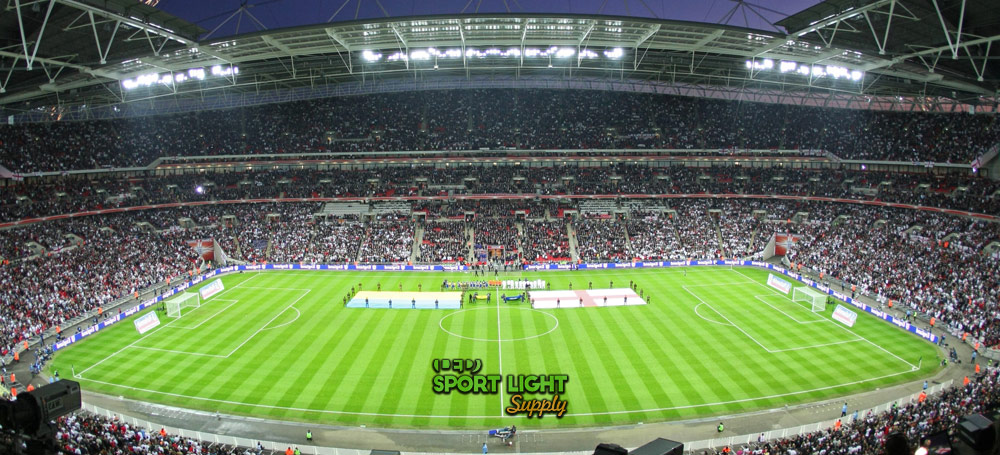
Soccer fields use various types of light fixtures, including metal halide, high-pressure sodium (HPS), mercury vapor, halogen, and LED. Each type provides a significant amount of light, but they differ in energy consumption and maintenance requirements. Metal halide and HPS lights, being filament-based, are commonly used but are increasingly being replaced by LED fixtures due to their superior quality and efficiency.
LED lights stand out because they consume considerably less wattage while delivering comparable or even superior brightness. The standards for LED lights can vary between manufacturers, but overall, they offer a cost-effective solution due to their longer lifespan and lower energy consumption compared to filament-based lights. Although replacement bulbs for filament-based fixtures are relatively inexpensive, their frequent replacement can become costly over time.
Luminous Efficiency and Lumen Output
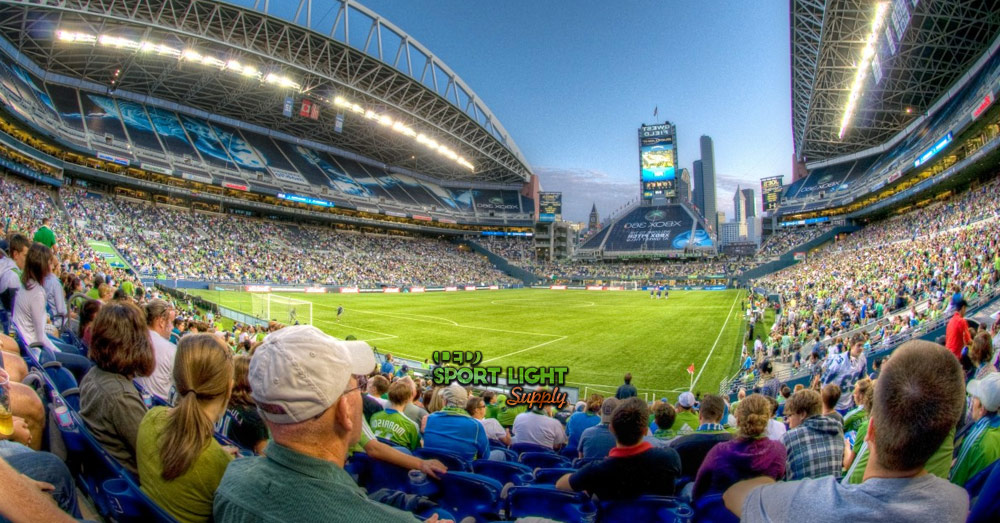
Luminous efficiency is a crucial factor when comparing different types of lighting. LED lights, for example, offer high luminous efficiency, with some fixtures producing up to 130 lumens per watt. In contrast, filament-based bulbs require significantly higher wattage to achieve similar light levels. For instance, a 1000-watt LED can produce the same amount of light as a 10,000-watt filament bulb.
This stark difference in wattage and luminous output is one reason why many stadium and soccer field owners are transitioning to LED lighting. The reduced wattage of LED fixtures translates into lower energy costs and better overall efficiency.
Lifespan
The lifespan of a light fixture is an important consideration. Filament bulbs typically last only a couple of years, whereas LED lights can last up to 20 years or more. The long lifespan of LED lights reduces the need for frequent replacements, making them a more cost-effective choice over time. The extended durability of LED lights also minimizes maintenance costs and contributes to their affordability in the long run.
Beam Angle
Proper beam angle is essential for effective field illumination. Soccer fields may have varying numbers of light poles depending on their size—smaller fields might use four poles, while larger fields could require four to six. Each light pole must be positioned with a consistent beam angle to ensure uniform lighting across the field. This consistency is also important for secondary or fill lights, which should align with the primary lights’ angles to provide even illumination.
Color Rendering Index (CRI)
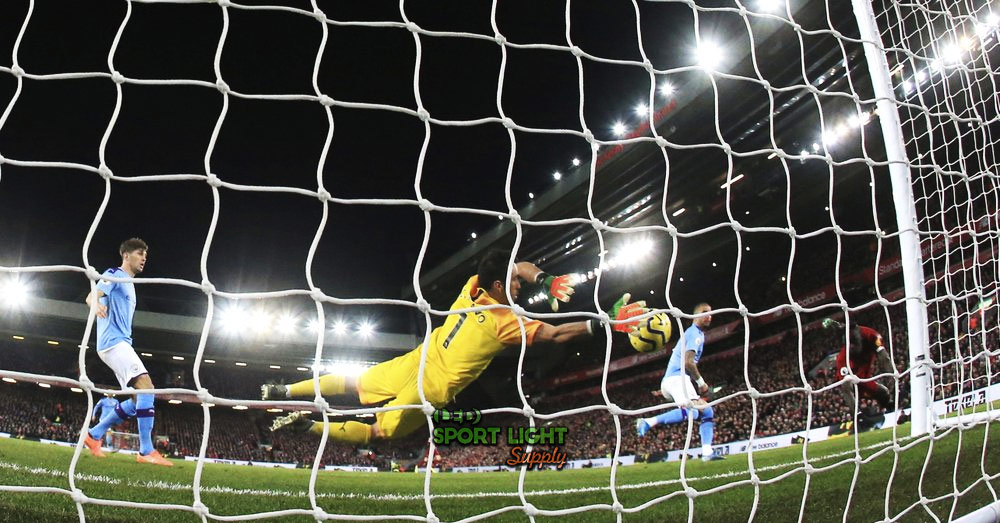
The Color Rendering Index (CRI) is vital for ensuring that lighting levels are bright yet clear, without causing overexposure or washout of the objects being illuminated. For soccer fields, a CRI value greater than 80 is generally suitable for standard events. However, for high-profile events such as the FIFA World Cup, a higher CRI may be required to ensure optimal visual performance and clarity.
Power Input
The power input for lighting fixtures is crucial for their operation. Each fixture requires an electrical connection capable of handling its wattage. The electrical cables and connections must be rated for the wattage of the fixtures they support. Fixtures with higher wattage demands require cables and connections that can manage the increased electrical load.
LED lights generally use standard electrical cables, provided they are rated for the wattage of each fixture. It is essential to have these connections installed by a qualified electrician or lighting contractor to ensure proper wiring and safety.
Maintenance Options
Maintenance is an important consideration when selecting LED fixtures. Not all LED lights are easy to repair due to varying manufacturing methods. Some designs allow for the manual replacement of semiconductor chips, while others may require sending the fixture back to the manufacturer for repair or replacement. It is advisable to inquire about the repairability of fixtures before purchase.
Having spare fixtures on hand can prevent disruptions in lighting if a fixture needs repair. While LED fixtures are generally reliable, choosing ones that are easier to repair or replace can be beneficial for long-term maintenance.
Weight of Soccer Field Light Fixtures
The weight of light fixtures affects the type of light poles required. Each pole has a maximum weight rating that must be considered to ensure stability and safety. The size and weight of the light fixtures should match the capacity of the poles.
LED fixtures, while often lighter than traditional filament-based lights, still require poles with adequate strength to support their weight and withstand environmental conditions such as wind. Proper mounting and structural support are essential to prevent any instability.
Certifications
Certifications are crucial for ensuring the safety and quality of lighting fixtures. Fixtures from overseas manufacturers, particularly those made in China, should have recognized certifications such as UL (Underwriters Laboratories) for U.S. products or CE (Conformité Européenne) for European products. These certifications indicate that the fixtures have been tested for electrical safety and meet relevant standards.
While not always the primary concern, having these certifications is essential for ensuring the reliability and safety of your lighting products.
Warranty
A reliable warranty is an important factor when purchasing sports lights, especially from overseas suppliers. It is important to verify the warranty terms and ensure that the company will support you in case of issues.
A good warranty typically covers at least half of the fixture’s rated lifespan. Many LED lighting companies offer warranties of around 10 years, which provides significant value and reassurance. A lengthy warranty reflects the manufacturer’s confidence in the product’s durability and performance.
Pros and Cons of Buying Soccer Field Lights for Sale
Advantages of Purchasing Soccer Field Lights
Cost Savings and Increased Profitability
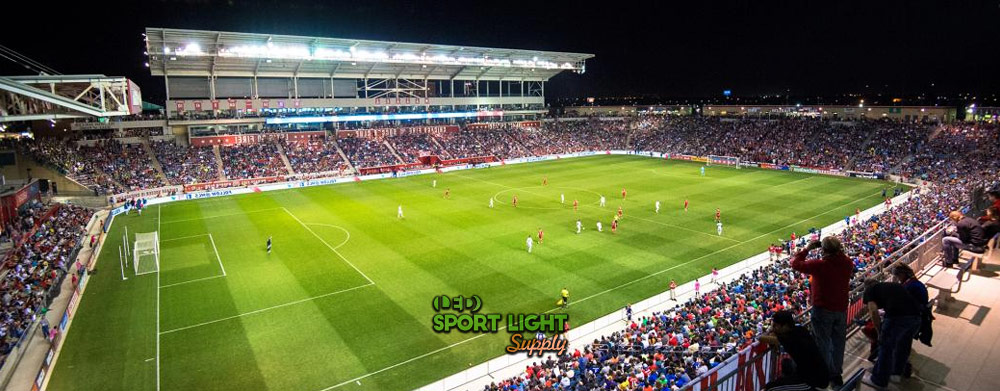
Investing in affordable soccer field lights can lead to significant cost savings and increased profitability through reduced electricity expenses. When planning your lighting installation, it’s beneficial to consider the total costs, including those associated with hiring an electrical contractor. By selecting cost-effective lights in advance, you can lower overall project costs. Understanding the specific lighting needs of your field and choosing suitable products beforehand can be a valuable strategy in managing your budget effectively.
Quick Availability
Many inexpensive football field lights available for purchase are often pre-made models, designed according to standard wattages and lumen outputs. These fixtures are typically ready for immediate shipment, making them a convenient option for quick installation. Knowing your power requirements allows you to choose from readily available stock, which can expedite the process. Be cautious of suppliers who take an extended time to check availability, as this may indicate the need for international ordering and additional expenses.
Expert Service and Free Lighting Consultation
A key benefit offered by some sports lighting companies is professional consulting services. Free lighting analyses and realistic 3D modeling can provide valuable insights into how different lighting systems and fixtures will perform. This expertise is particularly useful for regulation arenas and stadiums, ensuring that the lighting meets specific requirements, such as those needed for television broadcasts. Comprehensive support from your lighting supplier can enhance your understanding of the products and their optimal applications.
Disadvantages of Buying Soccer Field Lights
Limited Customization Options
Pre-made soccer field lights often come with fixed specifications for power, lumens, beam angles, color temperature, and Color Rendering Index (CRI). These standard settings may limit the ability to customize the lighting to your specific needs. While these lights are designed for general use, they may not offer the flexibility required for specialized applications or adjustments.
Risk of Purchasing Inferior Products
Buying soccer field lights from online sources, such as Amazon, may present risks regarding product quality. Cheap field lights might not meet performance expectations and could potentially be sourced from unreliable suppliers or manufacturers. To avoid this issue, it is advisable to choose LED suppliers that produce locally, reducing the risk of receiving poorly manufactured equipment and ensuring better quality control.
Communication Challenges with Suppliers
Purchasing lights from overseas manufacturers can lead to communication difficulties, particularly if the supplier’s offices are located in non-English speaking regions. Issues with language barriers and customer service can complicate the process of addressing problems or returning products for repairs. Opting for domestically produced soccer field lights can mitigate these challenges, providing easier access to support and service without language barriers.
| Pros | Cons |
|---|---|
| Cost savings and increased profitability through reduced electricity expenses | Limited customization options for power, lumens, beam angles, color temperature, and CRI |
| Quick availability of pre-made models for fast installation | Risk of purchasing inferior products from unreliable suppliers |
| Expert service and free lighting consultation | Communication challenges with overseas suppliers
|
How to Save Money When Buying Soccer Field Lights
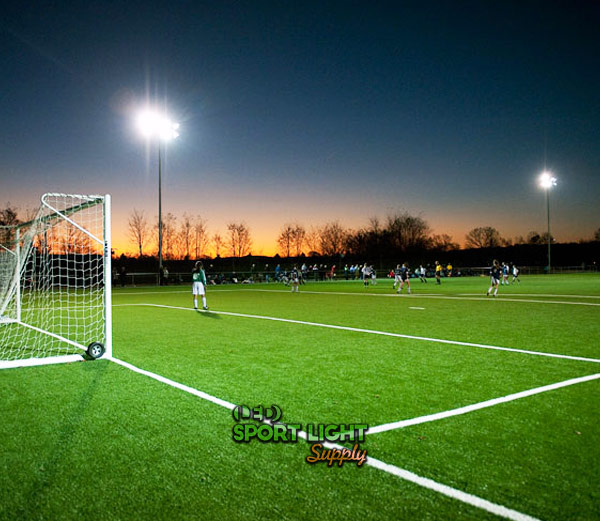
Understanding the Soccer Field Layout and Requirements
To maximize cost efficiency, it is crucial to have a comprehensive understanding of your soccer field’s layout and lighting requirements. This includes knowledge of the optimal placement for flood lights, which is essential for effective illumination and compliance with league standards. Upgrading and replacing your lighting according to the latest requirements can improve visibility and accommodate higher spectator numbers and television broadcasts. This strategic approach ensures that you meet all necessary standards while avoiding unnecessary expenses.
Ordering Uniform Fixtures
When purchasing soccer field lights, opting for fixtures with the same power and beam angle can lead to cost savings. For instance, if you need to order a large number of vertical floodlights with a specific wattage, bulk orders of identical models often come with price breaks. This not only simplifies the purchasing process but also reduces the overall cost per fixture. Consistency in the fixtures can streamline installation and maintenance while offering significant savings.
Requesting Bulk Discounts
Ordering in bulk is another effective strategy to reduce costs. For large soccer fields or stadiums, purchasing a substantial quantity of flood lights is often necessary. Suppliers typically offer discounts for bulk orders, especially when ordering more than 50 units of the same item. Leveraging bulk purchasing can lower the total cost of your lighting project, making it a cost-effective solution for extensive lighting needs.
Purchasing Directly from Manufacturers
Buying directly from soccer field lighting manufacturers can help avoid additional costs associated with intermediaries. Sports lighting company agents and contractors often work on commission and may mark up the price of lighting equipment. By purchasing directly from the manufacturer, you can bypass these added costs and keep your budget more manageable. This direct approach often results in lower prices and better control over your lighting investment.
Common Issues When Buying Soccer Field Lights
Unknown Origin of the Soccer Field Lights
One significant concern when purchasing soccer field lights is the unknown origin of the products. If the origin of the lights is unclear or if you cannot easily verify the manufacturing details, it may be wise to avoid making a purchase. Products from overseas vendors can sometimes be problematic, particularly if you encounter issues with the lights and find it challenging to reach the supplier. Opting for products from well-known, reputable sources with clear contact information can help mitigate these risks.
Overstated Luminous Efficiency
Manufacturers often highlight the luminous efficiency of their products, but these claims can sometimes be misleading. It is not uncommon for manufacturers to exaggerate the lumen output of their lights. For instance, a light may be advertised with a luminous efficiency of 180 lumens per watt (lm/W), while the actual efficiency is only 130 lm/W. To ensure that you are getting accurate information, request a certification or independent verification of the luminous efficiency from the manufacturer.
Poor Quality LED Drivers
Another potential issue with soccer field lights is the quality of the LED drivers. The LED driver is a crucial component that regulates the power supplied to the LEDs. Poorly designed or manufactured drivers can lead to inconsistent performance, such as automatic shut-offs or flickering. This issue is often associated with manufacturers who have inadequate quality control processes. To avoid problems, choose products from manufacturers with a reputation for high-quality components and rigorous quality assurance.
Flicker Issues
Flickering in LED sports lights is generally uncommon, but when it does occur, it can be problematic. Flickering is more likely to happen in LEDs if there are issues with the driver or electronics, or towards the end of the LED’s life. To minimize the risk of flickering, select high-quality LED lights and verify that they meet industry standards for performance and longevity. Ensuring that the lights come with a warranty or guarantee can also provide additional peace of mind.
Conclusion
Purchasing affordable soccer field lights can be straightforward with a clear understanding of your needs and available options. This guide offers essential tips for selecting the right LED lights, considering factors such as efficiency, bulk ordering, and customization to save money and meet your field’s requirements.
